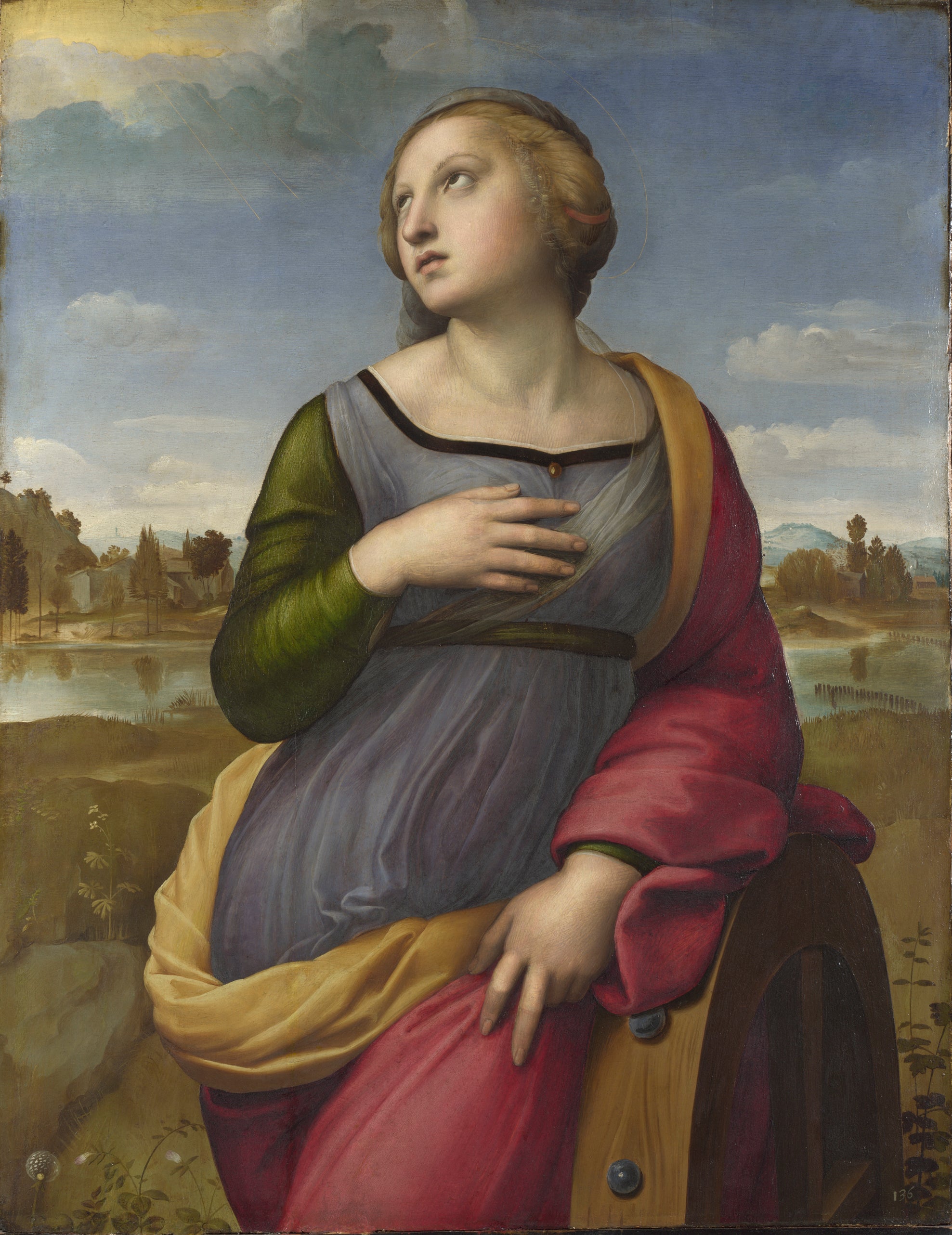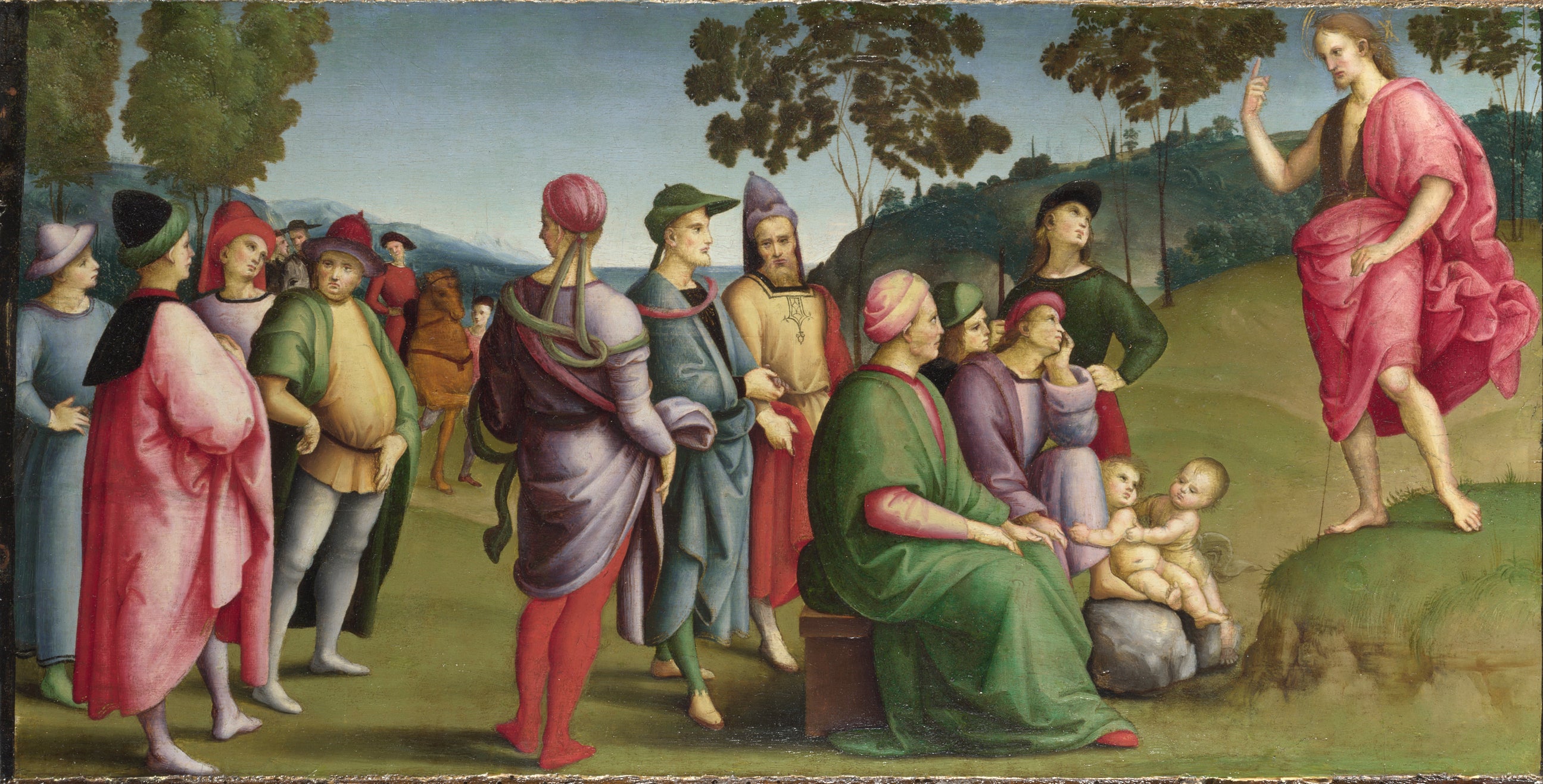Raphael, National Gallery review: ‘A show that adds heroic scale, bromance, even sex to effortless beauty’
This blockbuster exhibition shows how the great Renaissance painter’s late works turned up the heat on his pallid early Madonnas, says Mark Hudson

I don’t think I’ve ever heard anyone say, “I love Raphael.” Everyone knows the great Renaissance painter’s name. Most people, forced to look at one of his supremely graceful religious paintings, would declare themselves impressed by the sheer skill. Yet in our age of cultural fragmentation when ideas such as “finish” and “perfection” seem by their very nature suspect, Raphael’s all too immaculately rendered saints and Madonnas seem hard to relate to, let alone get excited about. Where his great rivals impress with their modernity – Michelangelo’s passionate megalomania and Leonardo’s quasi-scientific curiosity seem to propel them into the future – Raphael, the 16th-century boy wonder, who was for centuries more revered than any of them, feels a figure frozen in time.
This exhibition, like every self-respecting modern blockbuster, wants to tell us a new story about its subject, recasting Raphael as a figure relevant to our own age, the multidisciplinary entrepreneur, a sort of Jeff Koons of the Renaissance, who was as much a designer of prints, tapestries, mosaics and sculpture, and an innovative architect and pioneering archaeologist, as a painter of “apparently effortless beauty, purity and harmony”. And Raphael could certainly have taught today’s businessman-artists a thing or two about overweening ambition.
Born into a dynasty of painters in 1483, he was orphaned at an early age, and running the family studio when he was barely into his teens. He earned the hatred of the slightly older Michelangelo with his competitive drive for commissions among the great and the good of Florence and Rome, at a time when the ideal was to hit on a bankable model of beauty and keep hammering it. Raphael’s Saint Sebastian – who at first glance you’d take for a woman – has near identical features to Saint James in another small work, who in turn strongly resembles the kneeling figure of Mary Magdalene in the large Mond Crucifixion (1502); think a slightly plumper and smaller-featured Princess Diana.
Looking at the ridiculously pretty face peering out of the small and very faint drawing Head of a Boy (Self Portrait) (1498), you’d be forgiven for thinking the artist was drawing on his own features. Conceivably he was. Yet there’s a look of impertinent hauteur instantly discernible in those few grey lines, that suggests that jumped-up teenagers haven’t changed much in five centuries: it’s the spark of a real human personality – a quality that appears utterly lacking in just about every other figure in the exhibition’s first three rooms. From elderly saints standing in strangely airless chapels to Madonnas playing with children in manicured meadows, everyone’s wearing the same expression of placid serenity, and irradiated by the same even temperate light.
If you like the “luminosity and clarity”, as the wall texts have it, of this kind of idealised, sexless exaltation that lacks any real human feeling – and millions over the centuries have hailed it as the ultimate in art – nobody does it better than Raphael. Yet some of these figures, when you look at them closely, are very far from sexless. Every gracefully curving line in Saint Catherine of Alexandra (1507) from the National’s own collection, emphasises not just the classic Raphaelesque sense of poise and balance, but the sinuous twist of her body which fills most of the painting. The turn of her head accentuates the swell of her white neck as her eyes roll heavenward.

The tiny Madonna of the Pinks (1506) lets in a moment of everyday reality, as a smiling Mary plays delightedly with her little boy, but by the time we get to the Alba Madonna (1509), the already saccharine forms have softened into a kind of powder-puff proto-baroque; the podgy infant John the Baptist looks straight out of a Victorian soap advert, which says a lot about Raphael’s near limitless reach from the 16th to the 19th centuries.
It’s hard to get too excited about his designs for monumental urns, engravings based on his paintings, models of his various architectural projects or even his drawings. Raphael may be universally acknowledged as one of the greatest draughtsmen of all time, but when you come to an exhibition on art that strives for the superhuman, you want the big stuff, not marginalia and studies.
A wall-filling digital image of The School of Athens (1509-11), gives just the faintest impression of why this enormous fresco in the papal apartments in the Vatican has been regarded, from the moment it was created, as one of the absolutely great paintings. But managing to secure one of the actual tapestries of the Acts of the Apostles, made from Raphael‘s designs, from the Sistine Chapel is a real coup. These are some of the key works of the western tradition, and seeing the effects of light and shade and deep perspective in Raphael’s life size drawing Paul Preaching at Athens, rendered in wool, silk and gilt-thread feels like a 16th-century attempt at virtual reality. While the 12ft-high drawing is seen only in a digital reproduction, the original being too fragile to move from the V&A, these works bring a sense of the heroic scale necessary to understanding what Raphael’s about.

Around them, the show has managed to bring together just enough substantial paintings to not underserve this major figure, with great works from its own collection boosted by major borrowings from around the world.
In his later religious painting, Raphael turns up the heat on those pallid early Madonnas, with stronger contrasts of light and dark, and richer colour, bringing a greater intensity and energy. The wiry, sun-bronzed figure of St Anne in The Madonna of Divine Love (1516), loaned from Naples, could pass for a real Italian woman of the early 16th century. This approach reaches its pinnacle in St Cecilia with Saints (1516), from Bologna, in which the instruments carried by the saints drop to the floor in a debris of stringless cellos and smashed tambourines, defeated by the higher music of the angels glimpsed through the clouds overhead. Beyond the surreality of the subject it’s the evocative evening light and deep, resonant colour that give this extraordinary work its emotional impact.
The final room presents a selection of Raphael’s portraits, the aspect of his work that’s easiest for the modern viewer to engage with. His Portrait of Baldassar Castiglione (1519), author of The Book of the Courtier, the Renaissance bible of aristocratic manners, embodies the author’s theory of sprezzatura – essentially not appearing to try too hard – both in the subject’s confident, but unassuming smile, and the breathtaking fluency with which it’s painted.
The larger-than-life energy of the stunning Self-portrait with Giulio Romano (1519) makes it probably the first great bromance painting. And with the bright eyes of the bare-breasted La Fornarina (1520), painted shortly before Raphael’s death aged 37 – of a “surfeit of love” apparently – raising all kinds of interesting questions about who’s looking at who in pornography down the ages, there are more than enough paintings in this final room alone that make me want to run out into the street and shout, “I love Raphael.”
Raphael is at the National Gallery 9 April until 31 July
Join our commenting forum
Join thought-provoking conversations, follow other Independent readers and see their replies
Comments